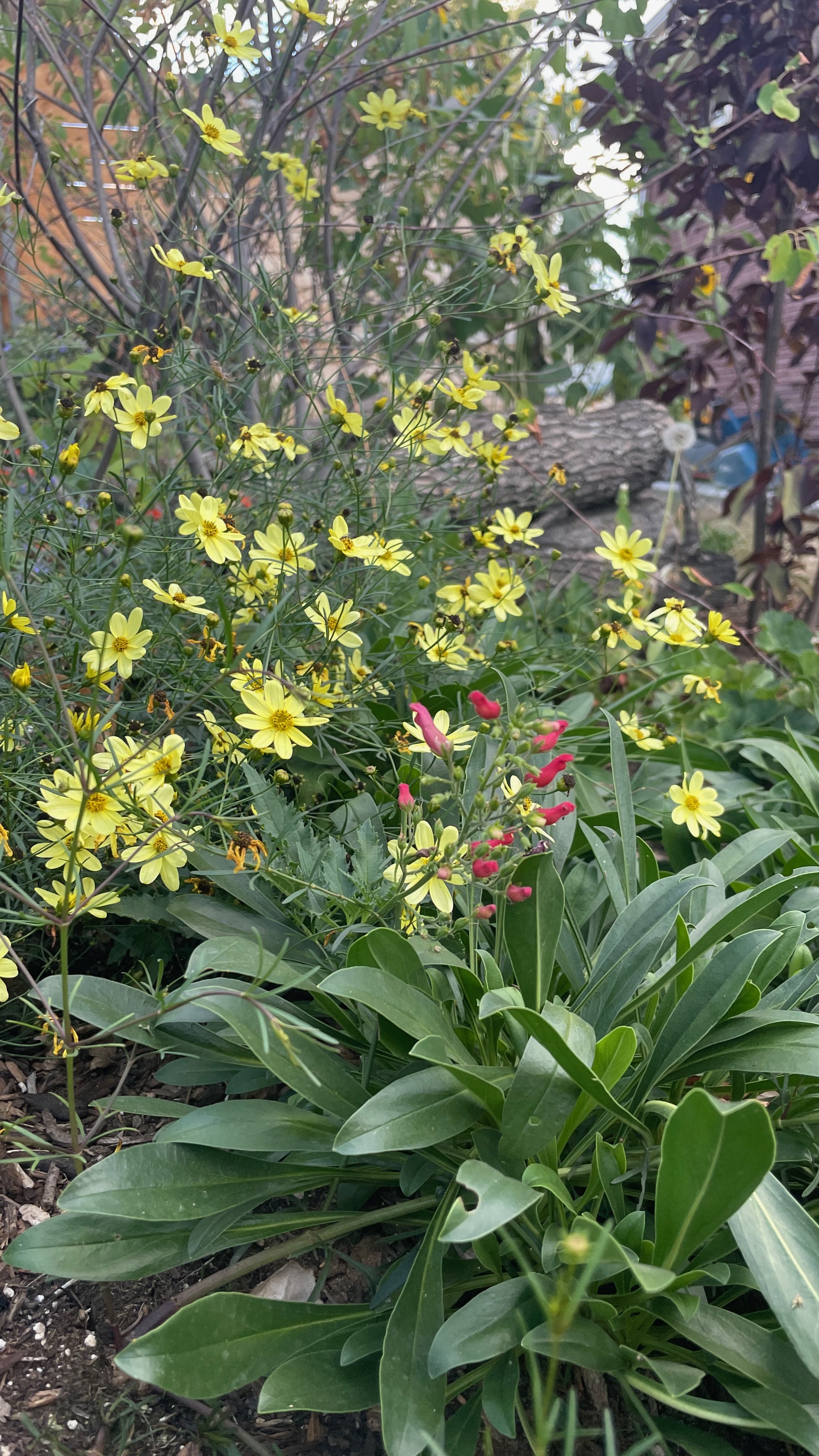Spring Chop and Drop
Chop and drop is a simple, sustainable gardening technique that involves cutting plant material and leaving it right where it falls. This method is an effective way to nourish the soil, control weeds, and reduce garden waste without relying on chemical fertilizers or labor-intensive processes.
The Spring Chop and Drop is a great way to "tidy up" in the garden in a way that supports wildlife and good plant health. Honestly, it's easy, too! It's a little different from other seasons, too, because we are planning for spring egg-laying insects, too.
How to Chop and Drop in the Garden
Select the Right Plant Material.
The first step in chop and drop is choosing the right plant material to cut. In my spring cleanup I chop and drop almost everything except weeds. If you have annual weeds, you can chop and drop those, too, but perennial weeds like Bindweed (which can reproduce from its stems) should go in the trash – not the compost.Cutting the Material.
Using garden shears, pruners, or a weed trimmer, cut the plant material down to manageable sizes. Ideally, you want the material to be in pieces small enough to break down quickly.Look for plants with hollow stems!
If they have hollow stems leave 8-24" of stem (the more the better). Nesting bees and other insects will use those hollow stems to lay their eggs in. This is critical for wildlife! And those stems will eventually fall over or be covered by new growth. Plants with hollow stems include: sunflowers, Monarda, some varieties of Sedum, Joe Pye Weed, Milkweed, and more!Drop the Material Where It Falls.
After cutting, leave the plant material in place on top of the soil. You can spread it out evenly to create a natural mulch layer. This mulch will break down over time, enriching the soil with organic matter, preventing soil erosion, and adding important nutrients.Monitor the Area.
Keep an eye on the material as it breaks down. If you see any plant matter that is resistant to decomposition or is harboring pests, you may need to pull it up and compost it.
Why Chop and Drop is Beneficial
Improves Soil Health
One of the primary reasons to use chop and drop is to enhance soil health. The plant material that you leave behind decomposes and turns into organic matter, which helps improve the structure and fertility of the soil. As this material breaks down, it releases essential nutrients such as nitrogen, phosphorus, and potassium, which are vital for plant growth. The organic matter also helps to build soil humus, which improves moisture retention and provides a habitat for beneficial soil organisms, such as earthworms and microorganisms.
Conserves Water and Reduces Evaporation
When you leave plant material on the soil surface, it acts as mulch, helping to conserve water by reducing evaporation. Mulch also creates a microenvironment around the plants, insulating the roots and keeping them cooler during hot weather.
Aids Beneficial Insects
When you remove last year's dead garden material, you may be removing beneficial insects and their eggs as well. Many insect eggs overwinter on leaves and in leaf litter. Removing that in the spring before those insects hatch – even if you are composting – kills the next generation of insects. So just like leaving the leaves, chopping and dropping is better for our insect helpers!
Prevents Soil Erosion
A thick layer of chopped and dropped plant material acts as a protective cover over the soil, preventing it from being washed away by heavy rains or wind. I have seen this in action in my Wildlife Garden! It really does help!
Reduces Weed Pressure
Nature abhors a vacuum, right? Another important benefit of chop and drop is its ability to help suppress weeds. When you leave plant material on the soil, it creates a barrier that prevents sunlight from reaching weed seeds, which can prevent them from germinating. Cover the soil to help reduce your weeding work!
Reduces Garden Waste
If you aren't composting your garden waste, chop and drop is an excellent way to deal with garden waste without having to transport it to compost piles or municipal composting facilities. Instead of throwing away plant material that would otherwise end up in a landfill, you’re turning it into a resource that benefits your garden. This technique promotes a more sustainable and closed-loop gardening system where nothing goes to waste.
So if you are picking up your pruners, don't get too stabby with them! Make your garden cleanup easier for you – and for the pollinators and insects who call your garden home. Chop and drop is a powerful and simple technique that helps gardeners maintain healthier, more productive gardens while minimizing waste. Whether you're managing weeds, improving soil health, or simply minimizing your garden’s waste, chop and drop is a technique worth incorporating into your gardening routine.
Happy Gardening!





